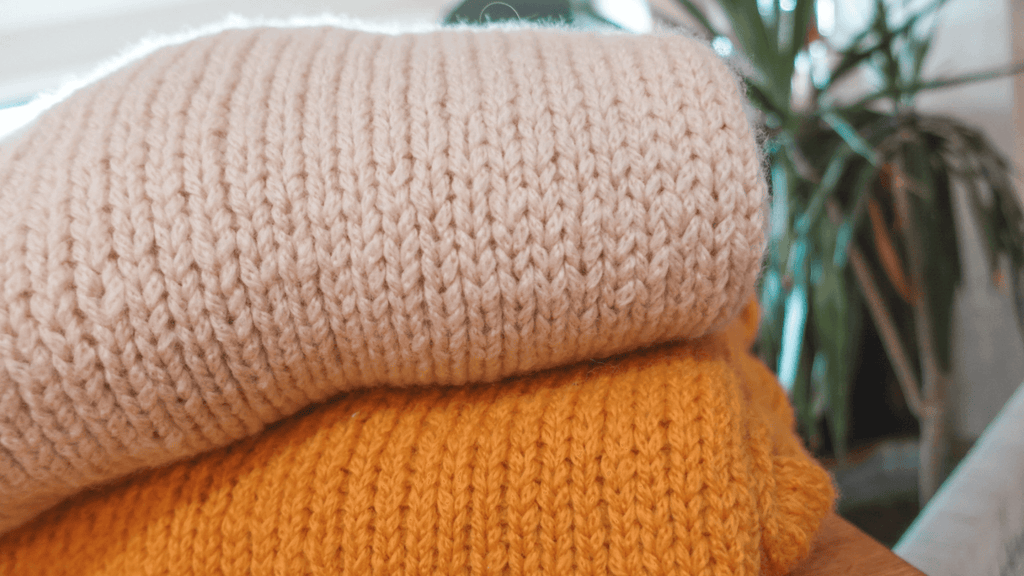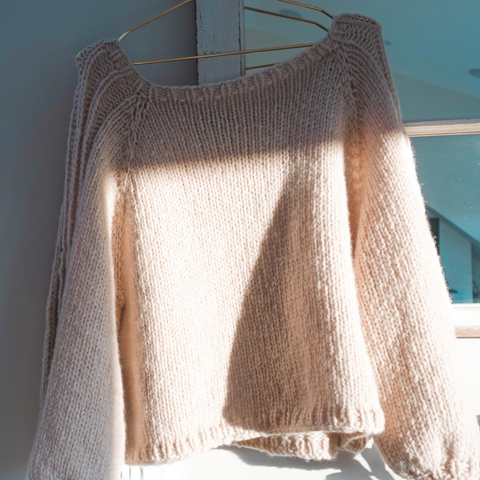We're sharing our Spring Cleaning Tips & Tricks to keep your knits fresh for seasons to come!
Natural wool fibers such as Merino, Cashmere and Alpaca make fabulous knit garments and accessories with their luxurious soft feel...but one thing that often turns people away is the cleaning and care instructions needed to make sure your piece lasts.
With a fine textile its important to take special care to ensure your knits stay looking their best. Properly caring for your knit pieces will also extend the life of your garments. Your favorite stack of sweaters, knit hats, and scarves, should last for many seasons and years to come.
To help you get started, here's our recommendations to best care for you knitwear:
Step one - Get Organized with a Closet Cleanout
Start by pulling out all your ‘cold weather’ knits that you most likely will not be using until next fall. Then determine which of them could use a little love - i.e. depilling & shedding, stain or spot treatments and/or cleaning.
Step Two - Depilling & Shedding Help
Pilling and shedding is a natural process that happens with wool fibers, especially ones that are soft due to their delicate nature. While this can be frustrating, it is easily corrected and one that should not deter you from enjoying these luxurious pieces in your wardrobe.
Over time & wear, the fibers on the surface of your knits become entangled together and clump to form little lint ball looking structures. These piles are often found under the arms, on the sleeves, or areas that come into contact with other layers due to everyday wear. The buildup or halo like effect that happens to fibers over time decreases the look of your garment.
Fix it with a sharp pair of scissors!
If lint and pilling begins to build up on your sweater we recommend taking a pair of sharp scissors and gently graze the surface of your sweater with the blades. We have found that this method is less intense and harmful to your sweater than any lint remover tool or sweater shaver you typically find online.
Step Three - Spot Treatment, Stain Removal, & Cleaning
Spot Treating & Stain Removal: Stains can be tricky, but hopefully don't have to me a ruined garment. Depending on the stain, here are some suggestions for spot treating:
Hand-Washing: A general rule of thumb is to only wash your Merino Wool in COLD water one to two times a year and only if necessary!
Hand washing can be done by filling a basin that will be able to accommodate your piece comfortably with cold water and a mild and gentle soap. Submerge your garment in the water and let it soak for just three to five minutes, followed by rinsing in warm water.
Three gentle detergent we recommend for hand washing: Soak, The Laundress, or Eucalyn.
Drying: Without twisting or wringing the garment, squeeze as much water as you can from it. A great way to absorb excess liquid is to roll the item in a thick, absorbent towel. You can then squeeze or wring the towel with a gentle touch. Once you unwrap it, you can lay it to dry flat on a new, dry towel.
Please note, darker colors (particularly reds) tend to run, however the impact and color dilution of your piece should be minimal.
Never put a fine wool garment into the dryer unless you plan to give it as a gift for a new baby afterward.
Other Cleaning Alternatives:
Steam Misting: A great alternative would be to lay your sweater flat and cover with a towel over the garment, and then use a steam iron over it to remove any oil, stain, or dirt buildup. You could also spray with a light fabric spray/sent to give it extra freshness.
Airing: Wool doesn't absorb odor as much as polyester or other synthetic fabrics do! Wool has a natural tendency to clean and refresh after use. Hang your sweater in fresh air for the day after use and it will be back to smelling fresh and ready to wear. Once your knit sweater has completed airing out, gently fold your knits in your closet.
Freezer: Yes, you read that right… put your knits in a sealed bag and in the freezer for up to 48 hours. This helps to shrink the fibers, helps to minimize pilling and shedding, and can make the garment refreshed! Freezing also helps to reduce the risk of moths.
Dry Clean: We don’t recommend dry cleaning but if you are not comfortable with caring for your merino wool clothing, the dry cleaners can be an option!
Unfortunately most of the time, machine washing could destroy your knits and we do not recommend taking the chance...trust us, we've tried!
Step Four - Storing for next season
Hanging for long periods of time is not always recommended, as it can stretch and mis-shape your knits. For lightweight and thinner woven wools you can gently fold and keep in your closet, but be careful for moths!
We recommend for items you know you are not going to wear for a bit, to place in sealed plastic and store under your bed or storage closet. Sealing of garments made with wool is important to prevent the damage of moths. For further moth protection infuse lavender and cedar essential oils in your closet.
Want to learn more about sustainable fibers, check out our recent ‘Are you a label turner’ article here.
If all else fails, ask your mother.






Comments (0)